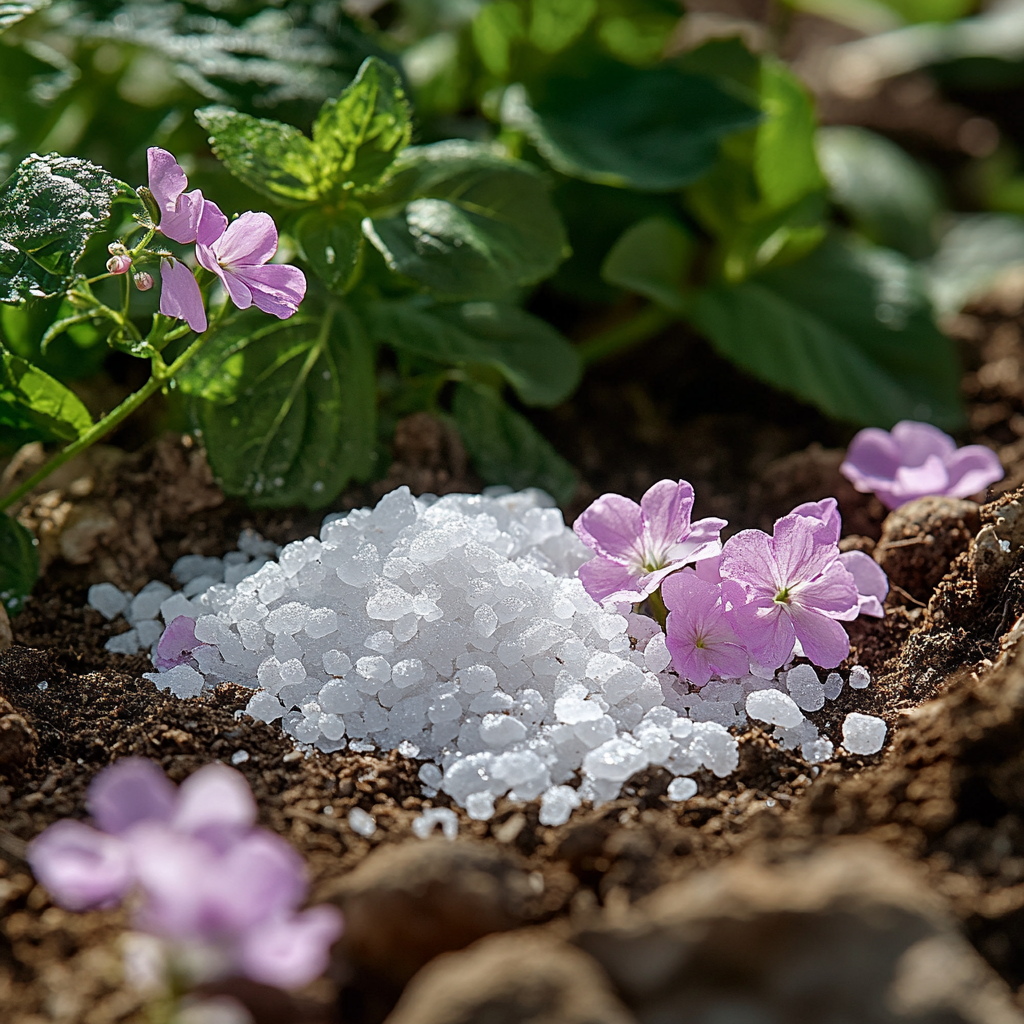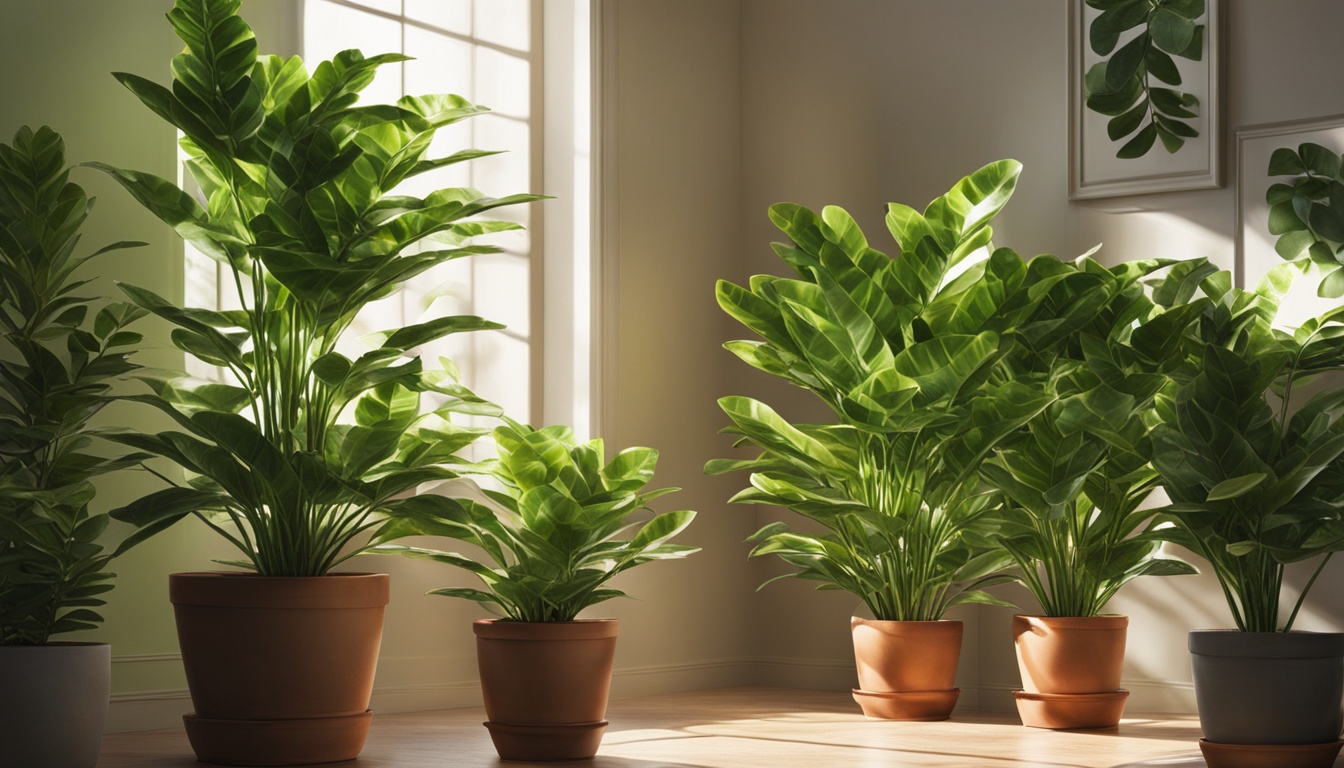Epsom salt, a versatile mineral with a long history, might just be the garden savior you didn’t know you needed.
Originally discovered in Epsom, England, this natural mineral—officially known as magnesium sulfate—is commonly used for easing muscle aches and as a laxative.
But in the gardening world, it’s hailed as a must-have for promoting lush, healthy plants and vibrant blooms. Here’s a deeper dive into how Epsom salt can transform your garden into a thriving oasis:

1. Boost Nightshade Yields
Nightshades—like peppers, tomatoes, eggplants, and potatoes—are known for their nutrient demands, particularly magnesium.
Magnesium is crucial for these plants as it helps them produce more fruit and enhances the flavor of their produce. To give your nightshades a nutrient boost, sprinkle 1 tablespoon of Epsom salt around the base of each plant.
For a quicker result, dissolve the salt in a gallon of water and apply it directly to the soil. Regular biweekly applications will help ensure your nightshades produce plentiful, delicious crops.

2. Deter Garden Pests
Garden pests can wreak havoc on your hard work, but Epsom salt offers a natural deterrent.
Unlike table salt, which can be harmful to plants, Epsom salt irritates pests like snails and slugs, making them less likely to linger. While it won’t kill them outright, it’s a great way to discourage their presence.
Since Epsom salt is water-soluble, you’ll need to reapply it regularly, especially after rain or watering, to maintain its effectiveness.

3. Sweeten Your Fruits
If you’re aiming for the sweetest fruit possible, Epsom salt might be your secret ingredient.
By increasing chlorophyll production in fruit-bearing plants like trees, bushes, and vines, Epsom salt boosts the plant’s energy levels. More energy translates to more sugar in the fruit, enhancing its sweetness.
Apply Epsom salt around the base of these plants or mix it with water and apply it to the leaves for the best results.

4. Prevent Transplant Shock
Transplant shock can be a major setback when moving plants or starting them indoors. This stress often occurs when a plant’s roots are disturbed, leading to wilting or even death.
Epsom salt can help alleviate transplant shock. Before transplanting, mix Epsom salt into the planting hole or sprinkle it on the topsoil.
This added magnesium helps the plant recover faster and establishes stronger roots, giving it a better chance of thriving in its new location.
5. Keep Leaves Green
Yellowing leaves can signal a magnesium deficiency, which can stunt plant growth and reduce yield.
To remedy this, feed your plants Epsom salt once a month. Use 1 tablespoon per foot of plant height, sprinkling it around the base or mixing it into the soil. This simple addition can rejuvenate your plants, turning those yellow leaves back to a vibrant green.
6. Fight Weeds
Weeding is a laborious task, but Epsom salt can make it easier. Create a powerful weed killer by combining a few cups of Epsom salt with a gallon of vinegar and a splash of liquid dish soap.
Pour the mixture into a spray bottle and target weeds. Be cautious to avoid spraying desired plants, as the mixture is potent and can kill them too.

7. Lush Lawn
If your lawn is looking lackluster, it might be missing a crucial element—magnesium. Epsom salt can help revitalize it.
Spread 3 pounds of Epsom salt over every 1,250 square feet of grass, then water thoroughly. This treatment helps the grass absorb essential nutrients, leading to a healthier, more vibrant lawn.
8. Remove Tree Stumps
Removing tree stumps can be both costly and labor-intensive. If you’re looking for a cost-effective alternative, Epsom salt can assist in the process.
Drill several holes into the stump and fill them with Epsom salt. Over the following weeks, the salt will help the stump decompose naturally, making it easier to remove.

9. Beautiful Blooming Roses
Roses are a garden favorite but can be tricky to grow. Epsom salt can simplify the process by promoting larger, more colorful blooms.
Add Epsom salt at planting time and during the blooming period to provide the magnesium roses need for vibrant, plentiful flowers.

10. Splinter Removal
Gardening often leads to splinters, but Epsom salt can help ease the discomfort. Dissolve 2 tablespoons of Epsom salt in water and soak the affected area.
The salt helps draw out the splinter, making it easier to remove with minimal discomfort.
11. “Frizzle Top” Fighter
Palm trees often suffer from a condition known as “frizzle top,” where the tops of the leaves turn yellow. This usually results from a magnesium deficiency.
Combat this issue by spraying the crown and base of the palm trees with a solution of Epsom salt and water. This treatment will help restore the plant’s health and vibrant green color.
12. Cure Leaf Curling
Leaf curling is another sign of magnesium deficiency. If you notice your plant’s leaves curling, amend the soil with 1 tablespoon of Epsom salt.
This will help the plant absorb magnesium and return to a healthy, flat leaf shape.

13. Perky Potted Plants
Plants in containers are more prone to magnesium depletion than those in the ground. To keep your potted plants healthy, add 2 tablespoons of Epsom salt to the soil once a month. This will help ensure they get the magnesium they need to stay vibrant and strong.
14. Increase Nutrient Uptake
Epsom salt can enhance how well plants absorb other nutrients from the soil. Many commercial fertilizers already contain magnesium, but adding Epsom salt can reduce the need for excess fertilizers, helping plants get the most from their environment.
15. Fancy Full Ferns
Ferns and similar plants, like elephant ears, can sometimes look dull and yellowed. Revive them by adding 1 tablespoon of Epsom salt to a gallon of water and spraying the foliage. This treatment helps them achieve rich, dark green leaves, adding a lush appearance to your garden.
Epsom salt is a gardening gem that offers a range of benefits, from boosting plant health to enhancing fruit sweetness and keeping pests at bay. Incorporating Epsom salt into your garden routine can lead to healthier plants, a more vibrant garden, and less time spent on maintenance. Happy gardening!



